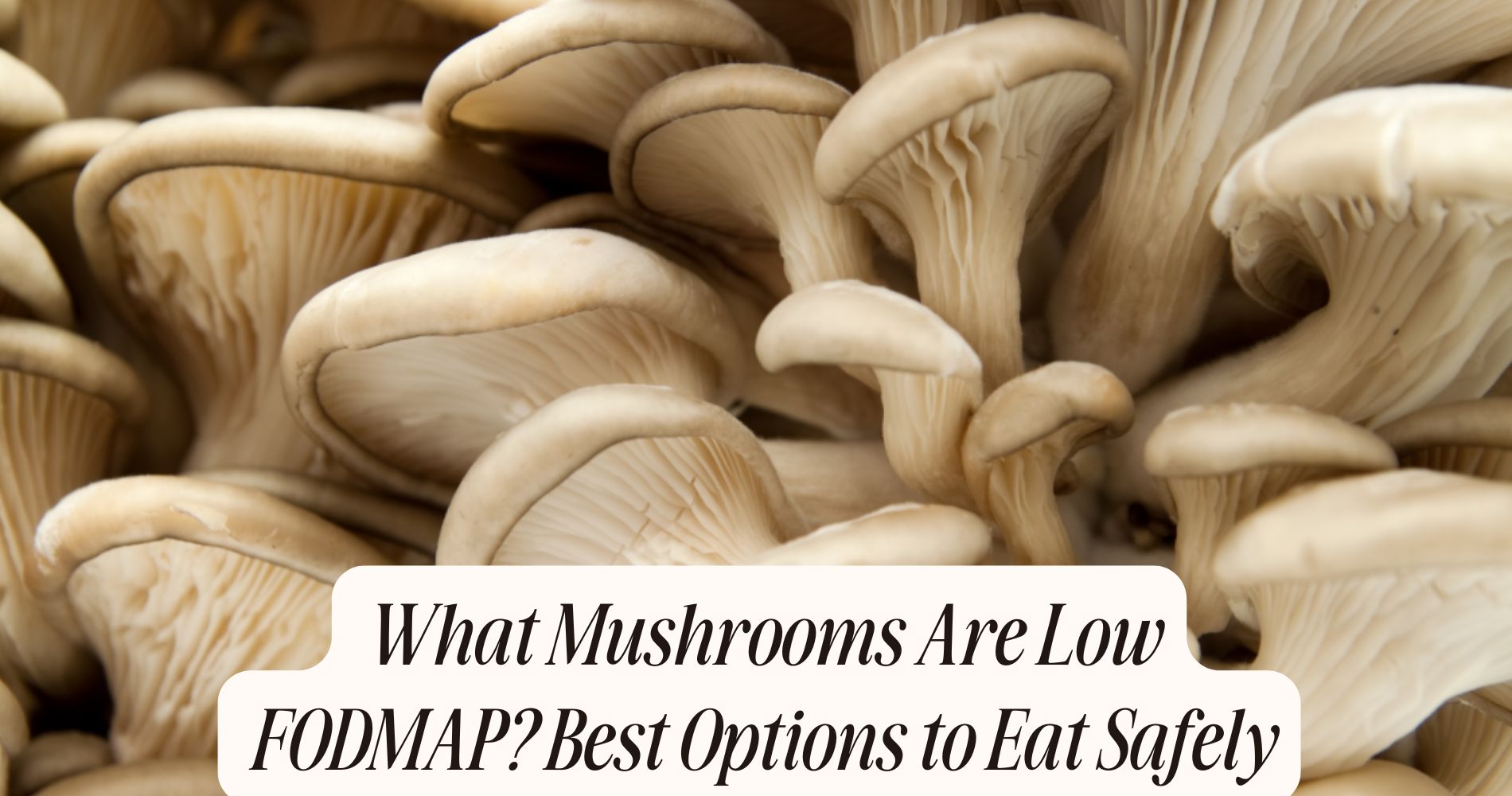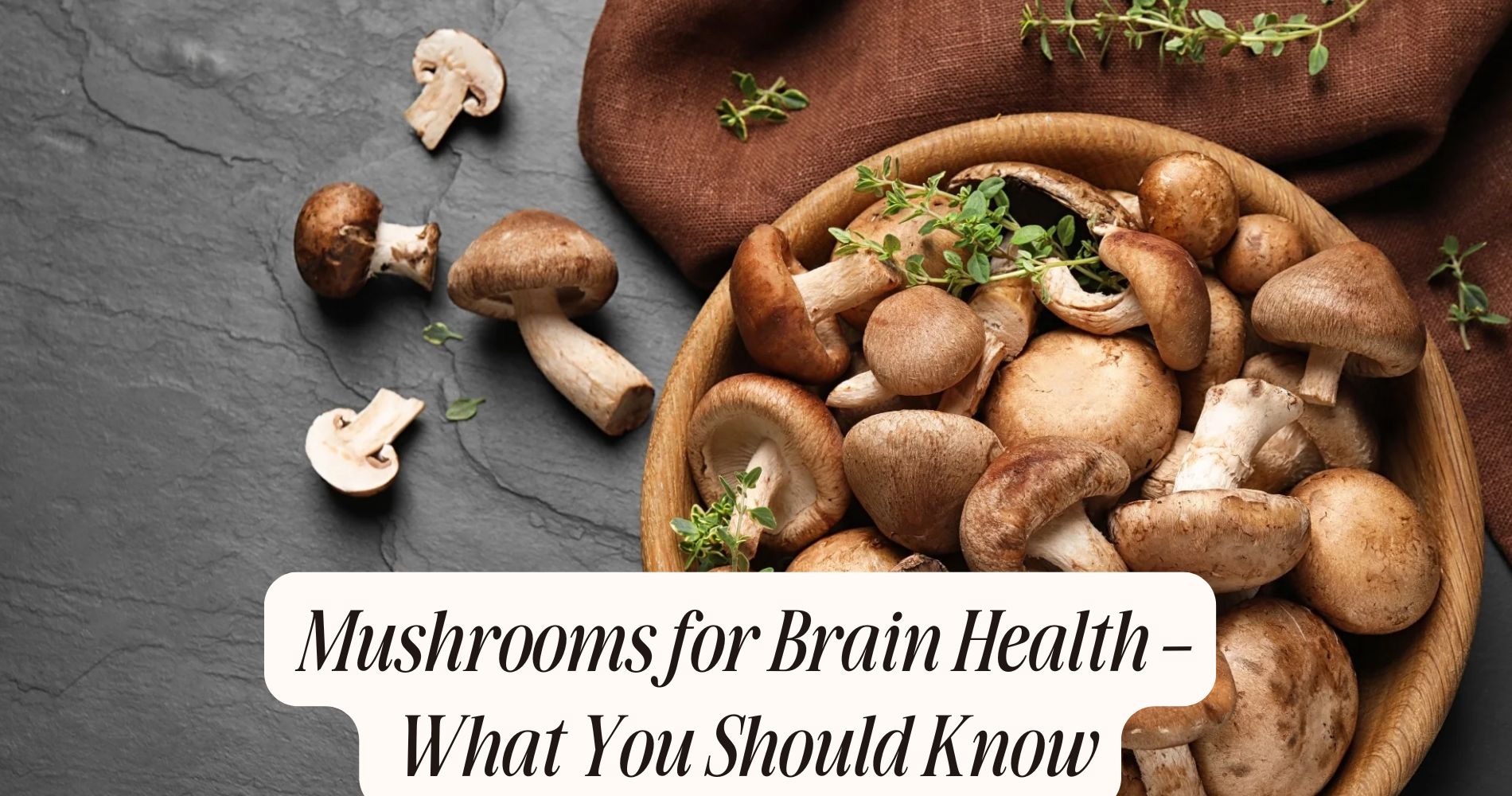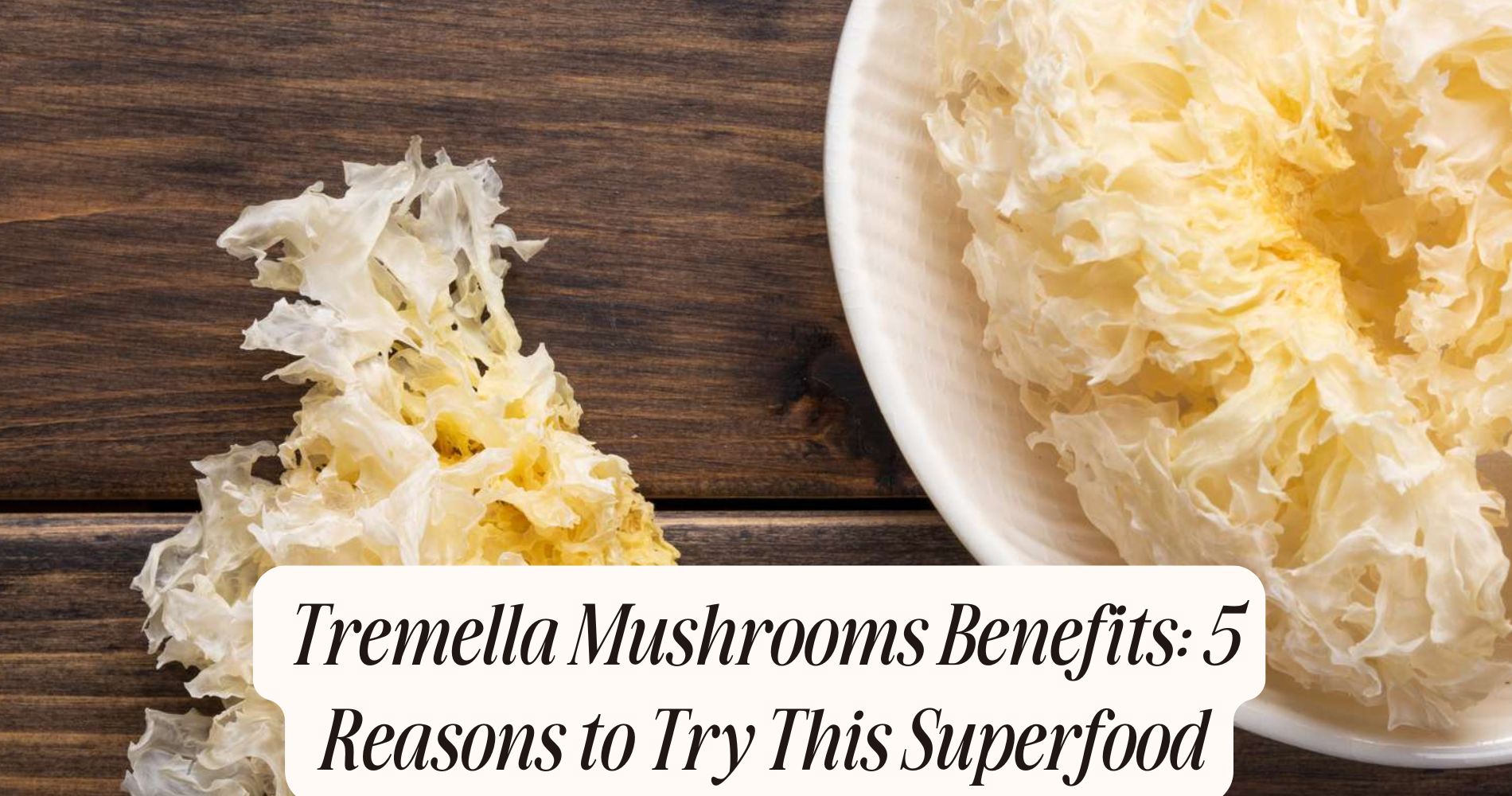
What Mushrooms Are Low FODMAP? Best Options to Eat Safely
What mushrooms are low FODMAP? When following a low FODMAP diet, opt for mushrooms like button, shiitake, and oyster, as they're generally well-tolerated and provide health benefits. Avoid high FODMAP options like garlic mushrooms and portobello. Low FODMAP mushrooms are rich in antioxidants and prebiotics, promoting gut health and reducing bloating. Remember to monitor your portion sizes to match your tolerance and explore different cooking methods to enhance flavor. There’s more valuable information on incorporating these mushrooms into your meals ahead.
Understanding FODMAPs and Their Impact on Digestion
While you might enjoy a variety of foods, understanding FODMAPs is vital for managing digestive health.
FODMAPs are short-chain carbohydrates that can ferment in your gut, leading to discomfort for some individuals. When consumed, certain FODMAPs can trigger fermentation effects, causing gas, bloating, and other digestive issues. This is largely due to their interaction with gut bacteria, which can overproduce gas during fermentation.
For those with irritable bowel syndrome (IBS) or similar conditions, identifying high-FODMAP foods is critical. By doing so, you can help maintain a balanced gut environment, reducing the stress on your digestive system.
Learning which foods to limit can noticeably improve your digestive health and overall well-being.
Low FODMAP Mushroom Varieties
When choosing mushrooms on a low FODMAP diet, some varieties are safer than others.
You’ll find that common options like button, shiitake, and oyster mushrooms are generally well-tolerated.
Plus, we'll share some cooking tips to help you enjoy these flavorful additions to your meals.
Safe Mushroom Choices
Mushrooms can be a delicious addition to your meals, but if you're following a low FODMAP diet, it’s essential to choose the right varieties. Safe mushroom choices include button mushrooms, shiitake, and oyster mushrooms, which are all low in FODMAPs.
These mushroom types not only add flavor but also provide various nutrients. When storing mushrooms, keep them in a paper bag in the refrigerator to maintain freshness and prevent excess moisture, which can lead to spoilage.
Avoid high FODMAP varieties like garlic mushrooms and portobello, as they may trigger symptoms. By selecting low FODMAP options and ensuring proper mushroom storage, you can safely enjoy the unique taste and health benefits that mushrooms offer.
Cooking Tips Included
If you want to enhance the flavor of your low FODMAP meals, incorporating safe mushroom varieties like button, shiitake, and oyster mushrooms can make a significant difference.

These mushrooms not only add depth to your dishes but also offer health benefits. When cooking, sautéing is one of the best methods; it brings out their natural umami flavor.
Consider adding them to stir-fries, soups, or omelets. You can also roast them for a richer taste. Just remember to keep portion sizes moderate, as overeating any food can trigger symptoms.
Experimenting with spices like thyme or rosemary can elevate the dish further. By using these cooking methods, you'll enjoy delicious low FODMAP meals without worrying about FODMAP content.
Nutritional Benefits of Low FODMAP Mushrooms
Low FODMAP mushrooms offer impressive nutritional benefits, particularly their rich antioxidant content, which can help combat oxidative stress in your body.
They also support digestive health, making them a great choice if you’re managing FODMAP sensitivities.
Incorporating these mushrooms into your diet can enhance your overall well-being while keeping your meals flavorful.
Rich in Antioxidants
Packed with antioxidants, low FODMAP mushrooms offer a powerful boost to your diet. Their impressive antioxidant properties help neutralize harmful free radicals, reducing oxidative stress in your body.
This can lead to significant health benefits, including a lower risk of chronic diseases like heart disease and cancer. Varieties such as shiitake and maitake are particularly rich in these beneficial compounds.
By incorporating these mushrooms into your meals, you not only enhance flavor but also support your overall well-being. Whether you sauté them, add them to soups, or toss them in salads, you’ll enjoy both taste and nutrition.
Supports Digestive Health
While many foods can disrupt your digestive system, low FODMAP mushrooms can actually support it. These mushrooms are low in fermentable carbohydrates, making them easier on your gut. By incorporating them into your diet, you can help maintain digestive balance, especially if you're sensitive to high FODMAP foods.

Low FODMAP mushrooms also provide essential nutrients that can positively impact your gut microbiome. They contain prebiotics, which promote the growth of beneficial bacteria, contributing to overall gut health.
This balance of gut flora is vital for digestion and can reduce symptoms like bloating and discomfort. So, if you’re looking for a delicious way to support your digestive health, consider adding low FODMAP mushrooms to your meals!
Cooking Tips for Low FODMAP Mushrooms
When cooking mushrooms on a low FODMAP diet, it’s essential to choose the right varieties and preparation methods to maximize flavor without triggering digestive discomfort.
Start by focusing on low FODMAP options like oyster or shiitake mushrooms. Sautéing techniques work well to enhance their natural taste; use garlic-infused oil instead of whole garlic for a rich flavor without the FODMAPs.
Pair your sautéed mushrooms with safe ingredients like spinach, zucchini, or bell peppers for added nutrition. Season with herbs like thyme or rosemary to elevate the dish further.
Experimenting with these methods not only guarantees safety but also allows you to enjoy delicious, satisfying meals while sticking to your low FODMAP lifestyle.
How to Incorporate Mushrooms Into Your Diet
Incorporating mushrooms into your diet can be both enjoyable and beneficial, especially when following a low FODMAP lifestyle. Start by exploring various mushroom varieties like shiitake, oyster, and enoki, which are safe and flavorful options. You can easily add them to salads, stir-fries, or omelets for extra nutrition and taste.

For long-term use, consider mushroom preservation methods such as dehydrating or freezing, which can retain their flavor and nutrients.
When cooking, remember to sauté or grill your mushrooms to enhance their taste while keeping them low FODMAP. Experimenting with different varieties and preservation techniques allows you to enjoy mushrooms in a variety of dishes while adhering to your dietary needs.
Recipes Featuring Low FODMAP Mushrooms
If you’re looking to elevate your meals with low FODMAP mushrooms, a variety of delicious recipes can help you make the most of these nutritious fungi.
One fantastic option is mushroom risotto. Simply sauté low FODMAP mushrooms like oyster or shiitake in olive oil, add arborio rice, and gradually stir in low FODMAP broth until creamy.
Another great choice is stuffed mushrooms. Remove the stems from large low FODMAP mushrooms, and mix the chopped stems with gluten-free breadcrumbs, herbs, and a sprinkle of cheese.
Bake until golden and enjoy a savory, satisfying dish. These recipes not only showcase low FODMAP mushrooms' rich flavors but also provide a wholesome, gut-friendly dining experience.
Potential Alternatives to Mushrooms
Although mushrooms add unique flavors and textures to dishes, there are several potential alternatives that can also enhance your meals while remaining low FODMAP.
Consider using zucchini or eggplant as mushroom substitutes; they both offer a satisfying bite and absorb flavors well. If you’re looking for plant-based alternatives, try marinated tofu or tempeh. These options can provide a hearty texture and soak up your favorite sauces.

Additionally, roasted bell peppers can add a sweet and smoky element to your dishes, mimicking the umami profile of mushrooms.
Don’t forget about using herbs and spices to boost flavor, as they can elevate your meals without the FODMAP concerns associated with mushrooms.
Experimenting with these substitutes can keep your meals exciting and delicious!
Monitoring Your FODMAP Intake
Monitoring your FODMAP intake is essential for managing symptoms related to irritable bowel syndrome (IBS) and other gastrointestinal issues. Start by tracking symptoms in a food diary, noting what you eat and how you feel afterward. This can help identify specific trigger foods.
When incorporating mushrooms into your diet, be mindful of the portion sizes; even low FODMAP options can cause issues if eaten in excess. Adjusting portions based on your individual tolerance is vital. For instance, you might find that a small serving of certain mushrooms works for you, while larger amounts could lead to discomfort.
Gut-Friendly Wellness: SUPER MUSHROOM GUMMIES for Sensitive Stomachs
If you're managing a low FODMAP diet and still want the benefits of functional mushrooms, Well Gummies' SUPER MUSHROOM GUMMIES are a gentle, convenient solution. These vegan-friendly gummies deliver the power of 10 functional mushrooms—like Lion’s Mane, Reishi, and Cordyceps—formulated to support brain health, energy, and immunity without upsetting your digestive system. With a delicious wild berry flavor and no jitters or crash, they’re as enjoyable as they are effective. Nourish your body and mind—safely and deliciously—with Well Gummies!
Frequently Asked Questions
Can I Eat Dried Mushrooms on a Low FODMAP Diet?
You can enjoy dried mushroom varieties like shiitake and porcini in low FODMAP cooking. Just stick to small portions, as larger amounts can increase FODMAP content. Always check specific guidelines to verify they fit your diet.
Are Mushroom Supplements Low FODMAP?
Mushroom supplements, particularly those containing mushroom extracts like reishi or lion's mane, can be low FODMAP. However, always check labels for added ingredients that might trigger symptoms, ensuring your choice aligns with your dietary needs.
How Do I Store Low FODMAP Mushrooms?
To store low FODMAP mushrooms, keep them in the refrigerator for short-term use. For longer storage, consider freezing methods like blanching before freezing, ensuring you maintain their quality and nutritional value.
Are There Any Mushroom Allergies to Be Aware Of?
Yes, certain mushroom varieties can trigger allergies. You should watch for allergy symptoms like itching, hives, or gastrointestinal distress. If you suspect an allergy, consult a healthcare professional for proper diagnosis and advice.
Can Mushrooms Trigger IBS Symptoms in Some People?
Yes, certain mushroom types can trigger IBS symptoms in some people. It's important to monitor your reactions, as individual tolerances vary. Experimenting with different varieties helps you identify which mushrooms might cause discomfort.
Conclusion
Incorporating low FODMAP mushrooms into your diet can enhance flavor and nutrition without triggering digestive issues. Varieties like shiitake, oyster, and enoki are excellent choices, offering both taste and health benefits. By using the cooking tips and recipes provided, you can enjoy these fungi safely. Remember to monitor your FODMAP intake and adjust portions as needed. With the right knowledge, you can savor mushrooms while maintaining your digestive health. Enjoy experimenting with these delicious options!




